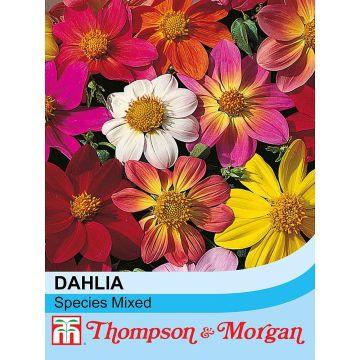Shipping country and language
Your country of residence may be:
Your country of residence is:
For a better user experience on our website, you can select:
Your shipping country:
Andorra
Austria
Belgium
Bulgaria
Canada
Chile
Croatia
Cyprus
Czechia
Denmark
Estonia
Finland
France
Germany
Greece
Hungary
Iceland
Ireland
Italy
Latvia
Lithuania
Luxembourg
Malta
Monaco
Netherlands
Poland
Portugal
Romania
Slovakia
Slovenia
Spain
Sweden
Switzerland
United Kingdom
We only deliver seed and bulb products to your country. If you add other products to your basket, they cannot be shipped.
Language:
French
German
Spanish
English
My Account
Hello
My wish lists
Plantfit
Log in / Register
Existing customer?
New customer?
Create an account to track your orders, access our customer service and, if you wish, make the most of our upcoming offers.


Cockscomb Triangle Mix Seeds - Celosia argentea Cristata
Cockscomb Triangle Mix Seeds - Celosia argentea Cristata
Celosia cristata Triangle mix
Plume Cockscomb, Woolflower
Why not try an alternative variety in stock?
View all →Order in the next for dispatch today!
Dispatch by letter from 3,90 €.
Delivery charge from 5,90 € Oversize package delivery charge from 6,90 €.
More information
This item is not available in your country.
Shipping country:
Andorra
Austria
Belgium
Bulgaria
Canada
Chile
Croatia
Cyprus
Czechia
Denmark
Estonia
Finland
France
Germany
Greece
Hungary
Iceland
Ireland
Italy
Latvia
Lithuania
Luxembourg
Malta
Monaco
Netherlands
Poland
Portugal
Romania
Slovakia
Slovenia
Spain
Sweden
Switzerland
United Kingdom
Schedule delivery date,
and select date in basket
This plant carries a 6 months recovery warranty
More information
We guarantee the quality of our plants for a full growing cycle, and will replace at our expense any plant that fails to recover under normal climatic and planting conditions.
Seed-only orders are dispatched by sealed envelope. The delivery charge for seed-only orders is 3,90 €.
Would this plant suit my garden?
Set up your Plantfit profile →
Description
Celosia argentea cristata or Cockscomb 'Triangle mix' features a beautiful palette of warm shades ranging from yellow to red, orange and salmon pink. Their unique crested flowerheads are long-lasting and don’t fade over time making it an excellent cut flower, ideal for dried floral arrangements. This highly original, extravagant annual will bring stunning autumnal hues to flower beds and borders. Easy to grow in a sunny location in well-drained, cool soil.
Native to tropical and temperate regions of America and Asia, Celosia argentea ssp. cristata is a perennial herbaceous plant of the Amaranthaceae family. It is commonly known as Cockscomb or Woolflower due to its strangely-shaped flowerheads. This short-lived, frost tender plant is often grown as an annual in colder climates; it enjoys plenty of sun and rich, cool, well-drained soils. 'Triangle mix' brings together several fabulous varieties for an explosion of harmonious colours when in bloom, from soft pinks and oranges to bright yellows and reds. The flowering period begins in July and generally extends until September, sometimes until the first frosts depending on the sowing date. Plants measure approximately 70 cm tall when in full bloom. The single, unbranched, ridged stems bear long, triangular light green leaves with occasional reddish or purplish colouring. At the end of the stem is held a compact, fan-shaped flowerhead with a wavy, velvety appearance. It consists of tiny, petalless flowers with coloured bracts. Each inflorescence measures up to 20 cm in diameter and can last up to 8 weeks. After pollination, seeds are formed which germinate easily in light soil.
Cockscombs are spectacular flowers that bring a dramatic, extravagant note to arrangements and perennial flower beds. They look fabulous on the patio or balcony when planted in large pots or containers. They enhance the modest blooms of daisies and combine well with delicate cosmos flowers and starry blues asters. They look sensational when planted in groups of 3 to 5, surrounded by a carpet of low-growing ground cover plants such as Cerastostima plumbaginoides, Alyssum sempervirens or Ajuga reptans. Celosia is an excellent cut flower – avoid overfilling the vase and make sure to change the water often to prevent stem rot.
Flowering
Foliage
Plant habit
Botanical data
Celosia
cristata
Triangle mix
Amaranthaceae
Plume Cockscomb, Woolflower
Cultivar or hybrid
Other Amaranthus seeds
Planting and care
Direct sow from March to May in loose, well-prepared soil. Scatter the seeds in furrows, 2-3 mm deep. Leave 30 cm between each furrow. Water regularly to maintain soil moisture, especially during dry spells. Alternatively, sow in pots or seed trays at a temperature of 20-25°C. Use good quality sowing mix and cover with a fine layer of compost or vermiculite. Keep the soil moist but not soggy and make sure to give the seeds enough light to germinate. Germination takes 3-15 days.
When the plants are strong enough to handle, transplant them into pots. When all risk of frost is over, they are ready to be planted out in their final location.
Celosia is a heat-loving plant that likes nitrogen-rich soil. Choose a sunny spot in light, enriched soil. Make sure to not overwater the plants as this can cause root rot.
Sowing period
Intended location
This item has not been reviewed yet - be the first to leave a review about it.
Flower seeds
Haven't found what you were looking for?
Hardiness is the lowest winter temperature a plant can endure without suffering serious damage or even dying. However, hardiness is affected by location (a sheltered area, such as a patio), protection (winter cover) and soil type (hardiness is improved by well-drained soil).

Photo Sharing Terms & Conditions
In order to encourage gardeners to interact and share their experiences, Promesse de fleurs offers various media enabling content to be uploaded onto its Site - in particular via the ‘Photo sharing’ module.
The User agrees to refrain from:
- Posting any content that is illegal, prejudicial, insulting, racist, inciteful to hatred, revisionist, contrary to public decency, that infringes on privacy or on the privacy rights of third parties, in particular the publicity rights of persons and goods, intellectual property rights, or the right to privacy.
- Submitting content on behalf of a third party;
- Impersonate the identity of a third party and/or publish any personal information about a third party;
In general, the User undertakes to refrain from any unethical behaviour.
All Content (in particular text, comments, files, images, photos, videos, creative works, etc.), which may be subject to property or intellectual property rights, image or other private rights, shall remain the property of the User, subject to the limited rights granted by the terms of the licence granted by Promesse de fleurs as stated below. Users are at liberty to publish or not to publish such Content on the Site, notably via the ‘Photo Sharing’ facility, and accept that this Content shall be made public and freely accessible, notably on the Internet.
Users further acknowledge, undertake to have ,and guarantee that they hold all necessary rights and permissions to publish such material on the Site, in particular with regard to the legislation in force pertaining to any privacy, property, intellectual property, image, or contractual rights, or rights of any other nature. By publishing such Content on the Site, Users acknowledge accepting full liability as publishers of the Content within the meaning of the law, and grant Promesse de fleurs, free of charge, an inclusive, worldwide licence for the said Content for the entire duration of its publication, including all reproduction, representation, up/downloading, displaying, performing, transmission, and storage rights.
Users also grant permission for their name to be linked to the Content and accept that this link may not always be made available.
By engaging in posting material, Users consent to their Content becoming automatically accessible on the Internet, in particular on other sites and/or blogs and/or web pages of the Promesse de fleurs site, including in particular social pages and the Promesse de fleurs catalogue.
Users may secure the removal of entrusted content free of charge by issuing a simple request via our contact form.
The flowering period indicated on our website applies to countries and regions located in USDA zone 8 (France, the United Kingdom, Ireland, the Netherlands, etc.)
It will vary according to where you live:
- In zones 9 to 10 (Italy, Spain, Greece, etc.), flowering will occur about 2 to 4 weeks earlier.
- In zones 6 to 7 (Germany, Poland, Slovenia, and lower mountainous regions), flowering will be delayed by 2 to 3 weeks.
- In zone 5 (Central Europe, Scandinavia), blooming will be delayed by 3 to 5 weeks.
In temperate climates, pruning of spring-flowering shrubs (forsythia, spireas, etc.) should be done just after flowering.
Pruning of summer-flowering shrubs (Indian Lilac, Perovskia, etc.) can be done in winter or spring.
In cold regions as well as with frost-sensitive plants, avoid pruning too early when severe frosts may still occur.
The planting period indicated on our website applies to countries and regions located in USDA zone 8 (France, United Kingdom, Ireland, Netherlands).
It will vary according to where you live:
- In Mediterranean zones (Marseille, Madrid, Milan, etc.), autumn and winter are the best planting periods.
- In continental zones (Strasbourg, Munich, Vienna, etc.), delay planting by 2 to 3 weeks in spring and bring it forward by 2 to 4 weeks in autumn.
- In mountainous regions (the Alps, Pyrenees, Carpathians, etc.), it is best to plant in late spring (May-June) or late summer (August-September).
The harvesting period indicated on our website applies to countries and regions in USDA zone 8 (France, England, Ireland, the Netherlands).
In colder areas (Scandinavia, Poland, Austria...) fruit and vegetable harvests are likely to be delayed by 3-4 weeks.
In warmer areas (Italy, Spain, Greece, etc.), harvesting will probably take place earlier, depending on weather conditions.
The sowing periods indicated on our website apply to countries and regions within USDA Zone 8 (France, UK, Ireland, Netherlands).
In colder areas (Scandinavia, Poland, Austria...), delay any outdoor sowing by 3-4 weeks, or sow under glass.
In warmer climes (Italy, Spain, Greece, etc.), bring outdoor sowing forward by a few weeks.





















